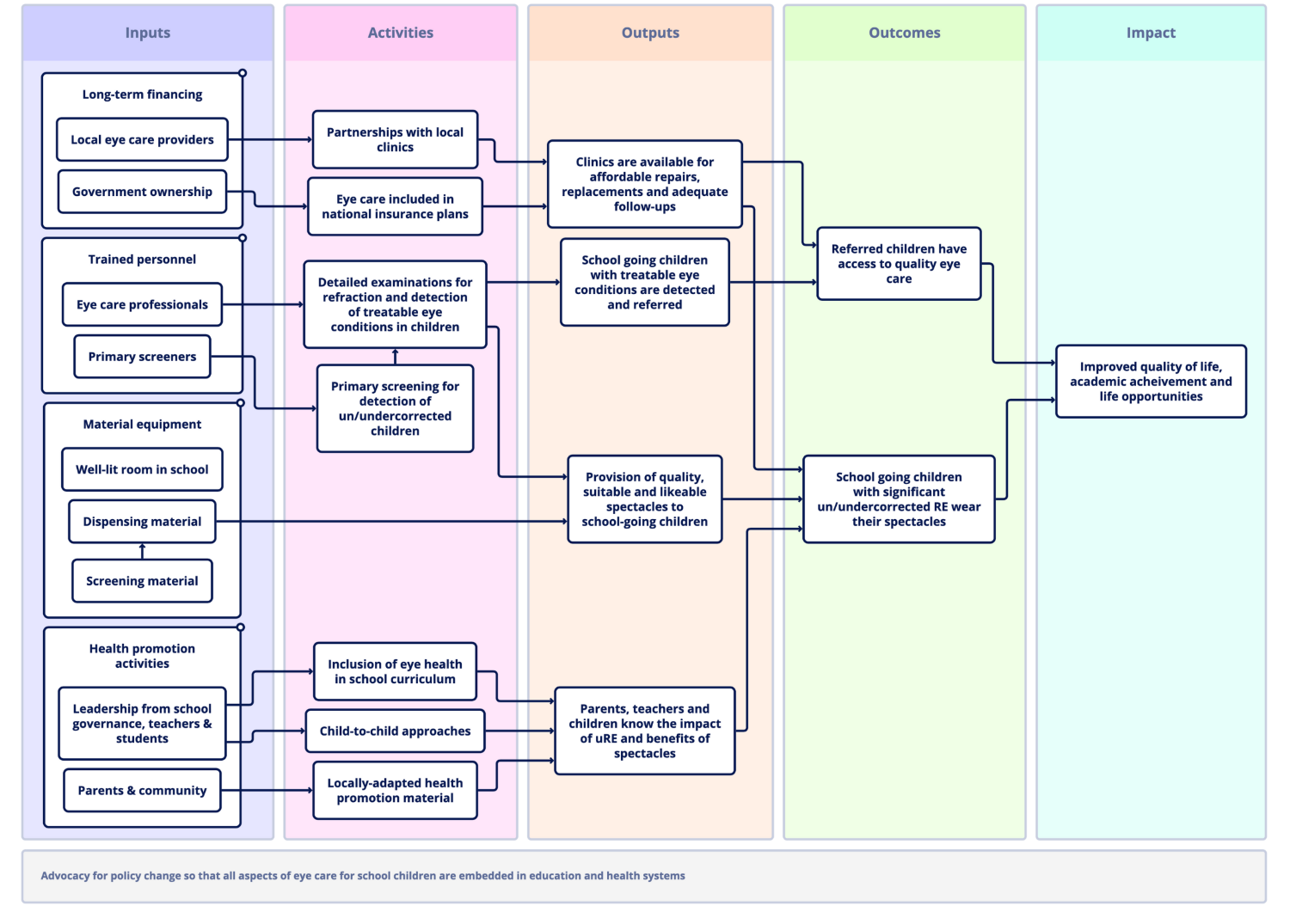加入史无前例的强大联盟,为所有人带来更好的眼健康。
加入 IAPB制定目标是制定计划的关键步骤。目标是成功实施计划所带来的积极变化。它代表了我们想要实现的最终结果。可以制定多个目标,以涵盖计划的不同部分。一旦确定了目标,就需要确定实现这些目标所需的投入和活动。变革理论或逻辑模型可以帮助我们直观地看到实现预期成果的各个步骤。


必须为每项成果制定 SMART 目标:具体(Specific)、可 衡量(Measurable)、可实现(Attainable)、相关(Relevant)、有时限(Time-based)。例如
评估现状与 "理想 "状况之间的差距有助于制定目标。
在规划计划时,还应考虑和评估计划可能遇到的障碍。
如果缺乏信息或对当地背景缺乏了解,焦点小组或关键信息提供者访谈等定性研究可有助于确定当地的障碍。
举个例子:女孩不喜欢戴眼镜。学校护士工作量过大。
| 预期成果 | 现状 | 目标 | 潜在障碍 | 可能的解决方案 |
|---|---|---|---|---|
| 所有孩子都戴上眼镜 | 只有 30% 的儿童佩戴眼镜 | 在 6 个月的随访中,眼镜佩戴率达到 70 | 女孩们不戴眼镜是因为被取笑了 | - 让年轻女孩与朋友一起挑选镜框
- 在学校开展有针对性的教育活动 |